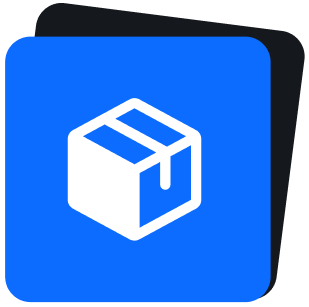Getting Started
Introduction to AccelByte Gaming Services (AGS)

Backend Services
Skip boring dev work with plug-and-play systems for 80% of your game’s backend

Backend Customization
Build 20% of the backend that makes your game unique without managing it

Server Orchestration
Automate spinning up and scaling servers globally for smooth, low-latency sessions

Build Distribution
Deliver builds faster to testers worldwide so you can ship multiple times a day

Crash Reporting
Catch and fix bugs before players see with real-time crash data and full context

Tools & Utilities
Monitor gameplay, test your setup, and tweak your game without juggling external tools
Introduction to AccelByte Gaming Services (AGS)
Learn to use AGS with our demo game "Byte Wars"
Connect and get support with other members of the AccelByte Community
Submit and review tickets while directly connecting with AccelByte
Join our Discord for support, insights, and networking!
.png?%20Thumbnail%20&%20Meta%20Image%20-%201200x675px%20(3).png&width=700&height=394&name=Website%20Featured%20%26%20Thumbnail%20%26%20Meta%20Image%20-%201200x675px%20(3).png?%20Thumbnail%20&%20Meta%20Image%20-%201200x675px%20(3).png)
Every modern game that spans platforms like Steam, Xbox, PlayStation, mobile, and PC has to solve one major challenge: letting players log in once and pick up where they left off, no matter where or how they return.
That seamless experience is not only a bare minimum for players but also directly drives higher player acquisition, better retention, and stronger monetization.
The problem is, delivering that smooth experience is far more complicated than it sounds with complex OAuth integrations, distinct token formats, multiple providers, account linking workflows, security vulnerabilities, and compliance obligations.
In practice, studios typically take one of two paths to implement cross-platform login:
There are hybrid and niche approaches (like open-source identity servers, partial federated flows, or custom SSO), but they still fall under one of the two main paths.
In this blog, we’ll unpack both approaches:
Building It Yourself
For some studios, building their own cross-platform login system makes sense. Whether it’s for full control, deep integration with proprietary systems, or long-term cost management, this path can work. But it also means taking full ownership of everything behind the scenes across the platforms you support.
Here’s what typically needs to be built and maintained:
This approach surely gives you full flexibility, but these systems aren’t just built once and forgotten. They need constant iteration and maintenance as providers update their APIs and user expectations shift.
|
Pros of Building It Yourself |
Cons of Building It Yourself |
|
|

Plugging In a Pre-Built Backend System
For teams that want to move fast, reduce backend complexity, and stay focused on game development, using a pre-built backend service can be a far more efficient path. These services take the backend burden off your plate so you can focus on gameplay.
You can just integrate an SDK or API layer that provides:
Designed to be modular, this approach lets you adopt just what you need, whether it’s third-party login support, account linking logic, or GDPR compliance and skip the rest.
|
Pros of Plug-and-Play Backend |
Cons of Plug-and-Play Backend |
|
|

If you're wondering what a real-world implementation of cross-platform login looks like with a pre-built backend, check out Byte Wars, our own open-source demo game, live on steam, fully powered by AccelByte’s backend platform.
It’s designed not just to showcase the tech, but to help game devs test, learn, and integrate plug and play solutions quickly. With Byte Wars, you can:
AccelByte’s Cross-Platform Authentication Solution
AccelByte provides a complete cross-platform authentication system with its ‘Access’ module, supporting all major providers (Steam, Xbox, PlayStation, Google, etc.) with everything from must-have essentials to nice-to-have enhancements.
On top of that, they also come with built-in tools to trace and debug login errors, token failures, and auth edge cases in real-time and integrated access to AccelByte Extend, a gRPC-based customization layer so you can build backend logic that we don't support.
This gives studios the best of both worlds: speed and scalability of fully managed identity solutions along with the freedom and flexibility of DIY systems.
Pricing
AccelByte is completely free to use, with full access not just cross-platform login, but also to other systems like matchmaking, in-game store, and more up to 30 concurrent users (CCU), even after your launch.
Reach out to the AccelByte team to learn more.